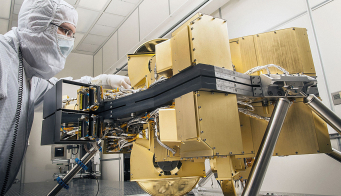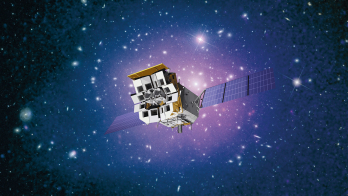Recent observations of two neutron stars have led to the announcement that a new form of matter might have been found. Astronomers using NASA’s Chandra X-ray observatory claim that one of the stars is too small, and the other too cold, for them to be ordinary neutron stars. They suggest the results are evidence for a new extreme form of matter – quark stars. However, the issue is far from clear cut.
Quark stars – if they exist – have a core made up of strange quarks. They were first postulated in the 1970s as an intermediate between neutron stars and black holes in both size and density. They can be more compact and cool faster than neutron stars.
This could explain the Chandra results: the neutron star RXJ1856 may have a radius as small as 4 km say astronomers, and radiation from the neutron star in 3C58 is less than 1,000,000°, which is much colder than expected. 3C58 is associated with the remnant of a supernova observed by the Chinese and Japanese in 1181, so the total cooling time is known.
This is not the first time that such claims have been made. Indeed, the radius of RXJ1856 was last year announced to be 6 km following observations using Rosat, the Extreme Ultraviolet Explorer and the Hubble Space Telescope. However, this result has recently been retracted as new parallax measurements used to calculate the distance to the star now suggest a radius of 15 km.
As far as 3C58 is concerned, observations were of emission from the nebula surrounding the neutron star. The lack of a black body component in this emission sets an upper limit on the temperature of the neutron star. However, different cooling models have been used to fit the data and suggest that a neutron star of this age could in fact exist at the observed temperature without the need for any exotic forms of matter.
For RXJ1856:
Drake et al. To be published in Astrophys. J.
Pons et al. 2002 Astrophys. J. 564 981-1006.
Walter et al. (submitted) Astrophys. J. Lett.
For 3C58:
Slane et al. To be published in Astrophys. J. Lett.
Yakovlev et al. To be published in Astronomy & Astrophysics.







